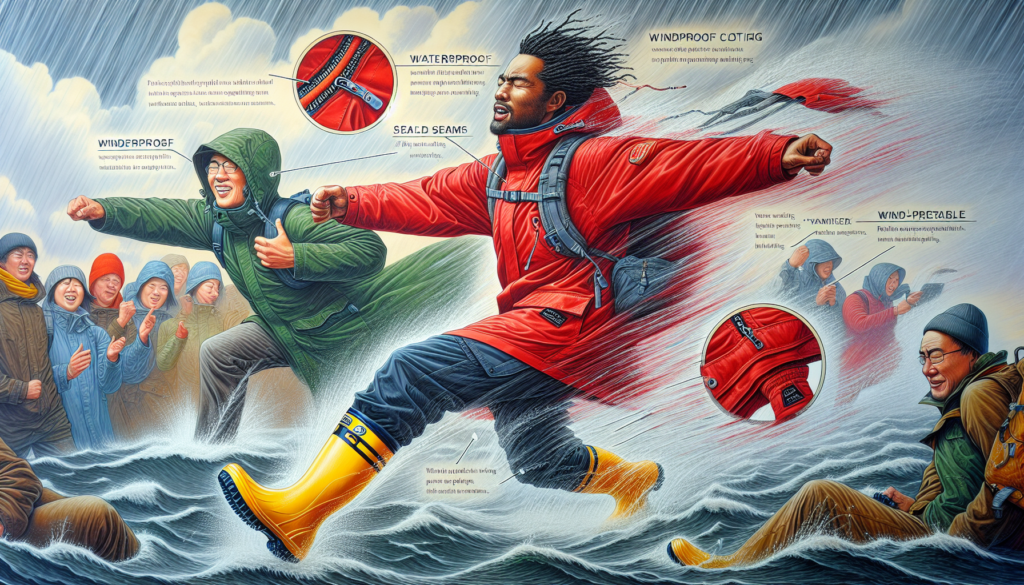Exploring the World of Weatherproof Clothing
When we step out into the unpredictable elements of nature, we rely on our clothing to shield us from the wind, rain, snow, and sun. Weatherproof clothing has become an essential part of our wardrobe, offering protection and comfort in various weather conditions. But what exactly is weatherproof clothing, and how has it evolved over time to meet the demands of modern lifestyles? In this comprehensive guide, we will delve into the world of weatherproof clothing, exploring its history, technology, applications, and future trends.
The Evolution of Weatherproof Clothing
Weatherproof clothing has a rich history that dates back centuries. In ancient times, people used natural materials like animal skins, fur, and plant fibers to create garments that could withstand harsh weather conditions. As civilizations advanced, so did the technology behind weatherproof clothing. The invention of waterproof fabrics like waxed cotton, rubberized materials, and later, synthetic fibers revolutionized the industry.
One of the most significant milestones in the evolution of weatherproof clothing was the development of Gore-Tex in the 1970s. This revolutionary fabric, made from expanded polytetrafluoroethylene (ePTFE), was both waterproof and breathable, setting a new standard for performance outerwear. Today, Gore-Tex remains a leading brand in the weatherproof clothing industry, with its products used in a wide range of outdoor gear.
The Technology Behind Weatherproof Clothing
Modern weatherproof clothing relies on a combination of materials, construction techniques, and design features to provide protection against the elements. Waterproof and water-resistant fabrics like nylon, polyester, and eVent are treated with durable water repellent (DWR) coatings to prevent moisture from seeping through. Sealed seams, waterproof zippers, and adjustable hoods and cuffs help to further enhance the performance of weatherproof garments.
Another key technology used in weatherproof clothing is breathability. While it is essential for outerwear to keep water out, it is equally important for it to allow moisture vapor to escape from the body. Fabrics like Gore-Tex, eVent, and Polartec utilize microporous membranes or coatings that allow sweat to evaporate, keeping the wearer dry and comfortable.
Applications of Weatherproof Clothing
Weatherproof clothing is not just limited to outdoor enthusiasts and adventurers. It has found its way into everyday wardrobes, with a wide range of brands offering weatherproof jackets, pants, footwear, and accessories for urban use. Whether commuting to work, running errands, or traveling, weatherproof clothing provides protection and style for all occasions.
In the world of sports and outdoor activities, weatherproof clothing plays a crucial role in ensuring the safety and performance of athletes. From hiking and skiing to cycling and mountaineering, weatherproof gear is designed to withstand the rigors of the environment and keep athletes comfortable and focused on their activities.
Sustainability in Weatherproof Clothing
As the fashion industry grapples with the environmental impact of fast fashion and synthetic materials, sustainability has become a key focus for weatherproof clothing brands. Many companies are now using recycled materials, organic fibers, and eco-friendly production processes to reduce their carbon footprint and promote a more sustainable future.
Innovations such as biodegradable waterproof coatings, plant-based membranes, and closed-loop recycling systems are paving the way for a more eco-friendly approach to weatherproof clothing. By embracing sustainable practices, brands can create products that not only protect against the elements but also protect the planet.
The Future of Weatherproof Clothing
As technology continues to advance and consumer demands evolve, the future of weatherproof clothing looks promising. With the rise of smart textiles, wearable technology, and 3D printing, we can expect to see a new generation of weatherproof garments that offer enhanced performance and customization.
Advancements in nanotechnology, biometrics, and material science will further push the boundaries of what weatherproof clothing can achieve. From self-healing fabrics to temperature-regulating membranes, the possibilities for innovation are endless. As we look towards the future, it is clear that weatherproof clothing will continue to play a vital role in our lives, keeping us protected and comfortable in any weather condition.
Expert Opinions
According to Dr. Emily Jones, a materials scientist specializing in performance textiles, “Weatherproof clothing has come a long way since its humble beginnings. With advancements in materials science and manufacturing processes, we are now able to create garments that offer unparalleled protection and comfort. As we strive towards a more sustainable future, it is crucial for brands to prioritize eco-friendly practices and innovative technologies in the development of weatherproof clothing.”
Common Misconceptions
One common misconception about weatherproof clothing is that it is only necessary for extreme outdoor activities. In reality, weatherproof garments are versatile and can be worn in a variety of settings, from urban environments to rural landscapes. By investing in high-quality weatherproof clothing, individuals can stay dry, warm, and comfortable no matter where they are.
Conclusion
To wrap things up, weatherproof clothing is a vital component of our everyday lives, offering protection, comfort, and style in all weather conditions. From its humble beginnings to cutting-edge innovations, weatherproof clothing has evolved to meet the diverse needs of consumers around the world. As we look towards the future, sustainability, technology, and performance will continue to drive the development of weatherproof garments, ensuring that we stay protected and prepared for whatever Mother Nature throws our way.



